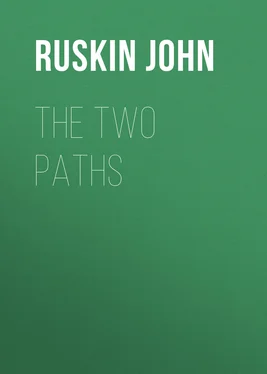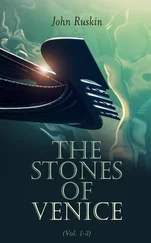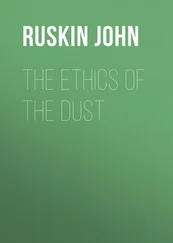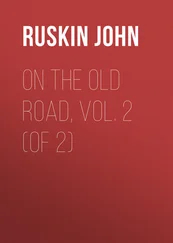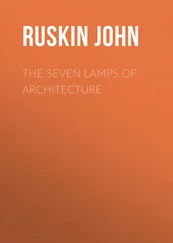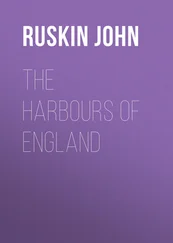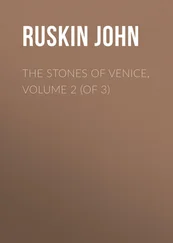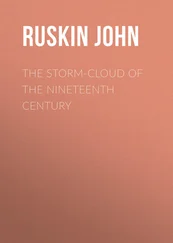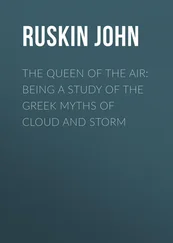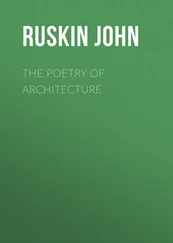John Ruskin - The Two Paths
Здесь есть возможность читать онлайн «John Ruskin - The Two Paths» — ознакомительный отрывок электронной книги совершенно бесплатно, а после прочтения отрывка купить полную версию. В некоторых случаях можно слушать аудио, скачать через торрент в формате fb2 и присутствует краткое содержание. Жанр: foreign_antique, foreign_home, architecture_book, literature_19, visual_arts, на английском языке. Описание произведения, (предисловие) а так же отзывы посетителей доступны на портале библиотеки ЛибКат.
- Название:The Two Paths
- Автор:
- Жанр:
- Год:неизвестен
- ISBN:нет данных
- Рейтинг книги:4 / 5. Голосов: 1
-
Избранное:Добавить в избранное
- Отзывы:
-
Ваша оценка:
- 80
- 1
- 2
- 3
- 4
- 5
The Two Paths: краткое содержание, описание и аннотация
Предлагаем к чтению аннотацию, описание, краткое содержание или предисловие (зависит от того, что написал сам автор книги «The Two Paths»). Если вы не нашли необходимую информацию о книге — напишите в комментариях, мы постараемся отыскать её.
The Two Paths — читать онлайн ознакомительный отрывок
Ниже представлен текст книги, разбитый по страницам. Система сохранения места последней прочитанной страницы, позволяет с удобством читать онлайн бесплатно книгу «The Two Paths», без необходимости каждый раз заново искать на чём Вы остановились. Поставьте закладку, и сможете в любой момент перейти на страницу, на которой закончили чтение.
Интервал:
Закладка:
John Ruskin
The Two Paths
PREFACE
The following addresses, though spoken at different times, are intentionally connected in subject; their aim being to set one or two main principles of art in simple light before the general student, and to indicate their practical bearing on modern design. The law which it has been my effort chiefly to illustrate is the dependence of all noble design, in any kind, on the sculpture or painting of Organic Form.
This is the vital law; lying at the root of all that I have ever tried to teach respecting architecture or any other art. It is also the law most generally disallowed.
I believe this must be so in every subject. We are all of us willing enough to accept dead truths or blunt ones; which can be fitted harmlessly into spare niches, or shrouded and coffined at once out of the way, we holding complacently the cemetery keys, and supposing we have learned something. But a sapling truth, with earth at its root and blossom on its branches; or a trenchant truth, that can cut its way through bars and sods; most men, it seems to me, dislike the sight or entertainment of, if by any means such guest or vision may be avoided. And, indeed, this is no wonder; for one such truth, thoroughly accepted, connects itself strangely with others, and there is no saying what it may lead us to.
And thus the gist of what I have tried to teach about architecture has been throughout denied by my architect readers, even when they thought what I said suggestive in other particulars. "Anything but that. Study Italian Gothic?—perhaps it would be as well: build with pointed arches?—there is no objection: use solid stone and well-burnt brick?– by all means: but—learn to carve or paint organic form ourselves! How can such a thing be asked? We are above all that. The carvers and painters are our servants—quite subordinate people. They ought to be glad if we leave room for them."
Well: on that it all turns. For those who will not learn to carve or paint, and think themselves greater men because they cannot, it is wholly wasted time to read any words of mine; in the truest and sternest sense they can read no words of mine; for the most familiar I can use—"form," "proportion," "beauty," "curvature," "colour"—are used in a sense which by no effort I can communicate to such readers; and in no building that I praise, is the thing that I praise it for, visible to them.
And it is the more necessary for me to state this fully; because so- called Gothic or Romanesque buildings are now rising every day around us, which might be supposed by the public more or less to embody the principles of those styles, but which embody not one of them, nor any shadow or fragment of them; but merely serve to caricature the noble buildings of past ages, and to bring their form into dishonour by leaving out their soul.
The following addresses are therefore arranged, as I have just stated, to put this great law, and one or two collateral ones, in less mistakeable light, securing even in this irregular form at least clearness of assertion. For the rest, the question at issue is not one to be decided by argument, but by experiment, which if the reader is disinclined to make, all demonstration must be useless to him.
The lectures are for the most part printed as they were read, mending only obscure sentences here and there. The parts which were trusted to extempore speaking are supplied, as well as I can remember (only with an addition here and there of things I forgot to say), in the words, or at least the kind of words, used at the time; and they contain, at all events, the substance of what I said more accurately than hurried journal reports. I must beg my readers not in general to trust to such, for even in fast speaking I try to use words carefully; and any alteration of expression will sometimes involve a great alteration in meaning. A little while ago I had to speak of an architectural design, and called it "elegant," meaning, founded on good and well "elected" models; the printed report gave "excellent" design (that is to say, design excellingly good), which I did not mean, and should, even in the most hurried speaking, never have said.
The illustrations of the lecture on iron were sketches made too roughly to be engraved, and yet of too elaborate subjects to allow of my drawing them completely. Those now substituted will, however, answer the purpose nearly as well, and are more directly connected with the subjects of the preceding lectures; so that I hope throughout the volume the student will perceive an insistance upon one main truth, nor lose in any minor direction of inquiry the sense of the responsibility which the acceptance of that truth fastens upon him; responsibility for choice, decisive and conclusive, between two modes of study, which involve ultimately the development, or deadening, of every power he possesses. I have tried to hold that choice clearly out to him, and to unveil for him to its farthest the issue of his turning to the right hand or the left. Guides he may find many, and aids many; but all these will be in vain unless he has first recognised the hour and the point of life when the way divides itself, one way leading to the Olive mountains—one to the vale of the Salt Sea. There are few cross roads, that I know of, from one to the other. Let him pause at the parting of THE TWO PATHS.
THE TWO PATHS
LECTURE I.
THE DETERIORATIVE POWER OF CONVENTIONAL ART OVER NATIONS
An Inaugural Lecture, Delivered at the Kensington Museum, January, 1858.
[Footnote: A few introductory words, in which, at the opening of this lecture, I thanked the Chairman (Mr. Cockerell), for his support on the occasion, and asked his pardon for any hasty expressions in my writings, which might have seemed discourteous towards him, or other architects whose general opinions were opposed to mine, may be found by those who care for preambles, not much misreported, in the Building Chronicle; with such comments as the genius of that journal was likely to suggest to it.]
As I passed, last summer, for the first time, through the north of Scotland, it seemed to me that there was a peculiar painfulness in its scenery, caused by the non-manifestation of the powers of human art. I had never travelled in, nor even heard or conceived of such a country before; nor, though I had passed much of my life amidst mountain scenery in the south, was I before aware how much of its charm depended on the little gracefulnesses and tendernesses of human work, which are mingled with the beauty of the Alps, or spared by their desolation. It is true that the art which carves and colours the front of a Swiss cottage is not of any very exalted kind; yet it testifies to the completeness and the delicacy of the faculties of the mountaineer; it is true that the remnants of tower and battlement, which afford footing to the wild vine on the Alpine promontory, form but a small part of the great serration of its rocks; and yet it is just that fragment of their broken outline which gives them their pathetic power, and historical majesty. And this element among the wilds of our own country I found wholly wanting. The Highland cottage is literally a heap of gray stones, choked up, rather than roofed over, with black peat and withered heather; the only approach to an effort at decoration consists in the placing of the clods of protective peat obliquely on its roof, so as to give a diagonal arrangement of lines, looking somewhat as if the surface had been scored over by a gigantic claymore.
And, at least among the northern hills of Scotland, elements of more ancient architectural interest are equally absent. The solitary peel- house is hardly discernible by the windings of the stream; the roofless aisle of the priory is lost among the enclosures of the village; and the capital city of the Highlands, Inverness, placed where it might ennoble one of the sweetest landscapes, and by the shore of one of the loveliest estuaries in the world;—placed between the crests of the Grampians and the flowing of the Moray Firth, as if it were a jewel clasping the folds of the mountains to the blue zone of the sea,—is only distinguishable from a distance by one architectural feature, and exalts all the surrounding landscape by no other associations than those which can be connected with its modern castellated gaol.
Читать дальшеИнтервал:
Закладка:
Похожие книги на «The Two Paths»
Представляем Вашему вниманию похожие книги на «The Two Paths» списком для выбора. Мы отобрали схожую по названию и смыслу литературу в надежде предоставить читателям больше вариантов отыскать новые, интересные, ещё непрочитанные произведения.
Обсуждение, отзывы о книге «The Two Paths» и просто собственные мнения читателей. Оставьте ваши комментарии, напишите, что Вы думаете о произведении, его смысле или главных героях. Укажите что конкретно понравилось, а что нет, и почему Вы так считаете.
